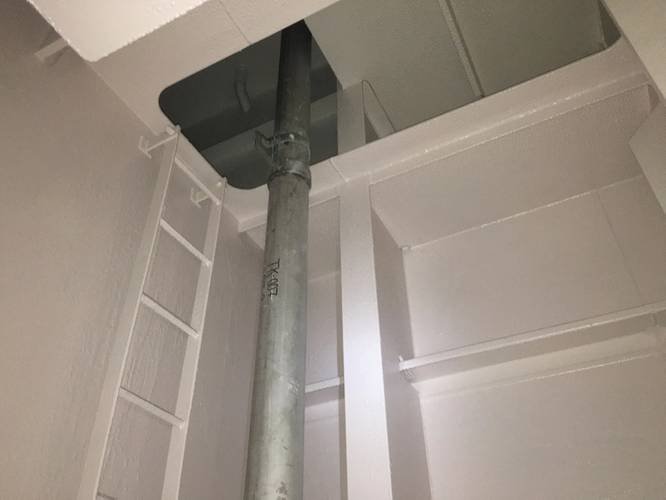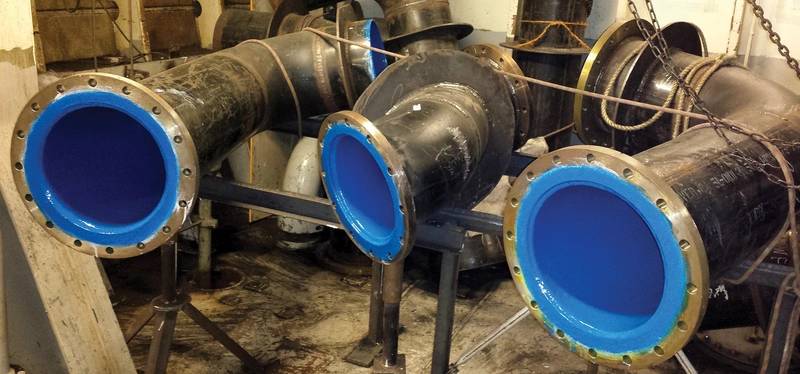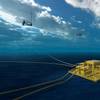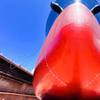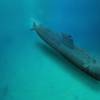Marine Coatings: Polyflake Protects against Corrosion
Corrosion starts from the inside out. The alkali that neutralizes acid water - and the acid water produced in a gas scrubbing system - are corrosive. Containment surfaces resistant to both alkali, acid water and their combination provide a safer ship with less expensive maintenance.
While selecting metal alloys as more resistant to either acid or to alkali, facing all conditions simultaneously is problematic, as temperature plays an important role in pitting corrosion.
Ultimately, leaking occurs within weeks, producing a hazardous, corrosive fluid compromising any equipment with a contact surface as well as exposed personnel. Leakage repair is expensive with potential collateral damage, insomuch as yard repair sessions can quickly spin into a refit gone rogue.
The Polyflake coating resins system protects the base metal from alkali and acids on the full range of Ph variations found in a gas scrubber system, in the temperature range where more expensive metal alloys may fail for pitting.
“Applying Polyflake creates a plastic tube within an aluminum tube,” said Capt. Dirk Sachse, master of M/Y Themis, a 156-Trinity.
After several Trinity megayachts experienced degradation of aluminum materials in the sea chest and exhaust piping, Capt. Sachse looked for a new solution versus cutting out the exhaust and replacing.
“There were various theories out there, including galvanic corrosion” said Sachse. “We did our own metallurgical tests and it was all 5083, 5086 good quality pipe, just as specified on the drawings. It was verified good stuff, but prone to breaking down under a certain temperature.”
Capt. Sache needed to replace the large engine dump, port and starboard, dividing the wet exhaust from dry exhaust dumps. He considered installing straight pipe, but began pondering coatings.
“This is not ceramic that lifts and keeps peeling,” said Capt. Sachse, adding “Polyflake is more like a plastic tube, plastic coating. I figure what can it hurt? It’s described as a five-year product with a 20-year life. It has been used extensively in the commercial market throughout Europe. Joerg Scheele of e4Power and Polyflake has hands on knowledge as an engineer at sea. He has seen ships fail and rebuilt systems to prevent subsequent failure. I have total respect for him.”
Polyflake was originally developed for restoration of damaged and corroded equipment, pumps and heat exchangers, and submerged hull, piping, decks and tanks requiring corrosion protection. The verified operational life, in continuous seawater service, exceeds 25 years without degradation of the performance, according to Gianfranco Lucignani, Polyflake’s vice president of business development.
“Since 2015, we applied Polyflake on alkali storage tanks for Royal Caribbean Lines (RCL) Oasis and Allure of the Seas, Celebrity's Solstice, Eclipse, and Silhouette,” said Lucignani, remarking Norwegian Cruise Lines (NCL) has applied Polyflake to its discharge line to protect the carbon steel piping with a consistent reduction of coat in respect to exotics alloys.
Lucignani said applying Polyflake coat to diffusers and overboard discharge pipes for gas scrubbers systems protects hull corrosion from the acid plume formed during load transfer, citing several cruise lines, Celebrity and Grimaldi amongst success stories.
A critical phase to the success of Polyflake coating is proper primer with an abrasive profile; a rough grind allows the base product to bite on. High voltage instruments test for minimal porosity on the coating.
One unique property of Polyflake, according to Capt. Sachse, is Polyflake has the same coefficient of expansion as the aluminum. “It could be the same for fiberglass, I don’t know,” said Sachse. “As aluminum heats up, it shrinks and expands. Polyflake does, too, but ceramic Polymer doesn’t.”
Capt. Sachse applied Polyflake to all main engine exhausts, generator exhausts, sea chests and any point where seawater where was injected, mixed with saltwater and discharged. He did not resurface valve flanges, no machining of contacting faces was required for Polycoat application.
“We have increased the lifespan of these valves and just did the bilge area,” said Capt. Sachse, adding “ABS was all for it.” He is also considering Polycoating the chain locker and lazaarette, and other difficult to maintain areas prone to corrosion.







